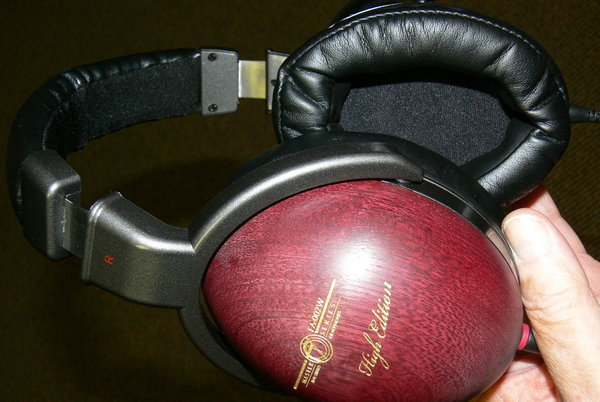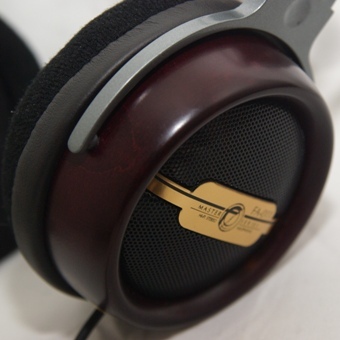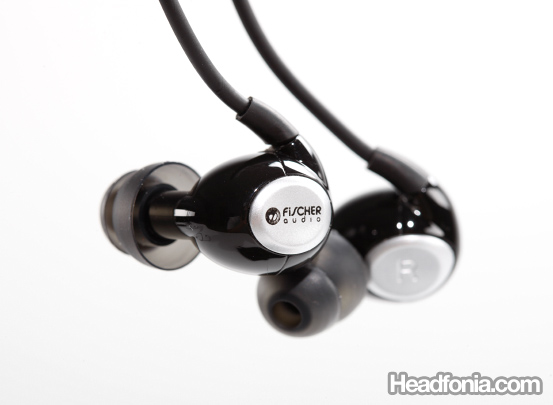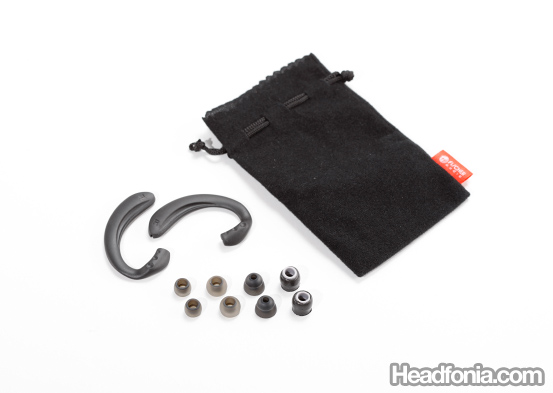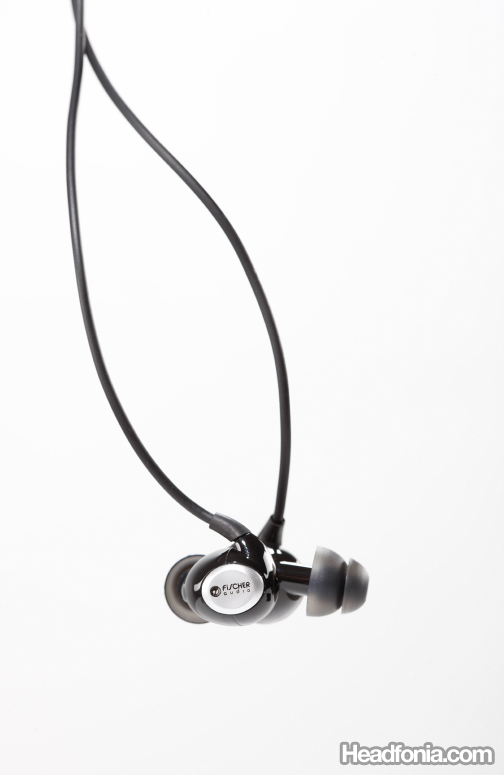Introduction
To start this, I would like to greet David from Frogbeats for making this review possible. A great customer service, so be sure to check out their site.
Fischer Audio is known for their great Audio Eterna IEM, which managed to deliver a “full” sound without compromising much the rest of the spectrum. Today I will review two models from Fischer Audio: the Fischer Audio golden wasps and the Fischer Audio Genesis. Will any of these following alternatives be up to their predecessor?
As I said in my former reviews, my primary musical choices are electronic music, dance, drum and bass and some dubstep. I wanted very much to give a listen to the eternity as they are said to have a lot of bass without compromising much the rest. I love bass and I have it as a guilty pleasure, so bass-heavy headphones are never a problem for whenever I want to hear something more relaxed.
Description
“Fischer Audio Genesis
A fun sounding IEM with a massive bass response. Ergonomic fit and a strong textile cable make these some great and enjoyable earphones.”
“Fischer Audio Golden Wasp
No details have been missed to make this look like the name! A budget IEM from Fischer Audio that is punchy and fun sounding. It also looks absolutely brilliant! Bzzzz.”
Technical Data Genesis
Impedance 18 Ohm
Cable Lenght 1.2m
Sensitivity 104dB
Accessories 7 Silicone Ear Tips (S/M/L), Storage Case, Warranty Card
Frequency response 5 – 20,000 Hz
Driver 9mm dynamic driver
Golden Wasp
Impedance 16 Ohm
Cable Length 1.2m
Sensitivity 98dB
Accessories 3 Silicone Ear Tips (S/M/L), Storage Case, Warranty Card
Frequency Range 20 – 20,000 Hz
Driver 9mm dynamic driver
Packaging
Both packages display the same kind of approach when it comes to the design of the box. Both have a little window that allows to see the phones themselves and the carrying case. The window is stuck with some Velcro. Both packages have the same kind of design: one big vertical name display, along with the series name, the company logo and a picture of the IEM. On the side we also see the same kind of display when it comes to lettering: the name of the series, the name of the IEM and the company logo. On the back of the package we can find the specifications of both IEM. When the window is open, besides seeing the IEM, each side has a different print on each package. On the Genesis, we can see an image displaying the qualities of the IEM. On the Golden Wasp, we can see a definitively not naïve approach on the packaging, displaying a wasp and many “ZzZZZZzzZZZZZ”. Overall, both packages are very nicely concealed, displaying quality in their design.
Accessories
I’ll start by the accessories of the Audio Wasp, as they have less to say. As we open the box, we reveal a plastic tray, which contains the phones, the “carrying pouch” (which I’ve put in inverted commas because it really isn’t one, but more on that later) and 2 sets of tips along the ones already pre-installed. The carrying pouch isn’t really nothing, because I can’t really use it to storage the IEM, because it’s flat and the phones don’t fit in.
On the genesis packaging we can find 7 pairs of tips (5 pairs of which single flange, 1 pair of bi-flanges and 1 pair of tri-flanges), one carrying case and the phones themselves. The carrying case allows to storage the IEM along with 2 pairs of tips, cause you never know when you might want to change them. The case allows to wrap the cable around it, and the jack sits on the mid of the case between both casings.
Build Quality
On the Golden Wasp, the first thing I noticed is the plastic from which the housing is made of. It just doesn’t seem durable, being much like the plastic from really low end products, but of course we can’t expect any kind of perfect build quality for thecheap price of them. Going down, we can find very solid built stress reliefs on the housings, and a little lower we can find a sort of a braided cable, with a plastic feel to it. Nevertheless, it feels solid and a good cable that will take some abuse. On the Y-split, we can find a metal splitter with “wasp” printed on it. On the 90º angled jack we can find a very nicely conceived stress relief, alongside a gold plated plug.
On the Genesis, we can find chrome housings, along with some black plastic and the name Genesis printed on the housing. The cable is protected by cloth, which means it could handle some accidental pulls, while maintaining intact. Also this cable helps reducing the microphonics. On the back of the housing, we can find a “bass enhancing port”. On the y-splitter there’s a plastic slider, that allows to adjust the cable length. The splitter is made of plastic and has a nice stress relief. On the jack we can find an hockey stick shaped jack, also with a good stress relief, and a gold plated plug.
Overall I think that while the Genesis is well designed in what concerns to build quality, the Audio Wasp could have had a little bit more effort in the housings (at least they put a lot of effort in its stress reliefs). But of course, they’re different price range products, so it’s normal a little bit of differences.
Comfort/Isolation
On the comfort chapter, there isn’t much to be said about both. They are not the best performers in comfort due to their bulky size (specially the genesis), but they are not a problem either. Just make sure you got the right tips (for me on the genesis the included dual flange, and on the audio wasp, the large from SoundMAGIC), and you’re ready to go on a voyage with them. Unfortunately, neither of them is very comfortable while wearing over the ear (basically on the genesis you can’t), so you’ll probably end wearing them straight down. At least the genesis has an ergonomic fit for straight down use.
On isolation, neither of them provides a deep insertion, so the isolation you get from them is really average. But due to dual-flanges (in my case) and the ergonomic fit, the genesis wins in this chapter by a fair margin. The kind of sound signature of the genesis also helps in camouflaging the outside noise, but more on that later. With this being said we can resume that the Golden Wasps perform mediocrely on this chapter, and you should be looking somewhere else if looking for isolation. The Genesis perform very well in isolation and comfort, but you shouldn’t buy any of these if pure isolation and comfort is what you need. Also neither of them suffer much from microphonics, which is a relief as these are not the best to be worn over the ear (one of the ways to reduce microphonics).
Sound
Source – Rockboxed Sansa Clip +, laptop (LG R400), TMN A1 (Huawei Pulse)
Files Used – 256 to 320 kbps and FLAC
Both of these are IEM which I think gain a lot from burning them in. The Audio Wasp sounded “meh” and with not much detail, I thought Fischer had made a mistake. The Genesis sounded bloated, with bass jumping all over the place, and not so detailed highs.
Burn-in
My burn-in consists in pink noise along with a playlist that is composed of the songs I usually hear on my daily basis.
At first when you hear the Audio Wasp, you feel like “WTF? What is this? No musicality, no dinamics, no nothing”. The best word to describe them is “meh”. After burn-in they change dramatically. The bass gains punch, the mids become a little bit more forward, and the highs timidly appear.
On the lower end you can feel that these pack a punch, but nothing overwhelming. They manage to reproduce bass-lines quite well, just with the little bit lack of detail with more complex bass-lines (or some dubstep parts). The bass doesn’t bleed in to the midrange, and it does a competent job.
The mids are reproduced nicely, and are in the right place, where they should be. I think they are best suited to male voices rather than female, I feel that in certain songs, like the ones from Dido, where I think that the voice isn’t just the best, comparing to other IEM.
The highs are where these phones lack. The cymbals feel dry, not crispy, and with a lack of detail. Also they have a recessed present in comparison to the forwardness of the mids and bass.
Their soundstage is medium, the normal for an IEM, and the positional accuracy is fairly good as well. On an overall note, they feel right for the price, but they only compete within their price range, not like other budget IEM that managed to jump out of their price bracket.
Now to the pricier, but far more exciting (for me at least) genesis. When I first put these on, I tried the song from Flux Pavilion – “Bass Cannon”. My reaction was like “BASS,BASS,BASS, am I wearing full sized cans?”. The bass was completely overwhelming in comparison to other frequencies. So I let them burn…
After settling down, I have put them on again. Now I felt that they were tamed. The bass is now controlled and doesn’t bleed in all directions. The mids now come forward and the highs are crisp. But it is still a sound signature dominated by the lower end. Luckily to me, I like it that way.
The lower end, it’s not like it’s involved by a “blob” of bass. Instead the bass allows the overall sound to gain dynamic, to be felt. And also it’s not a boomy bass, where the bass has no definition. Here the bass has texture, and definition to it. It allows to involve the listener to an experience I though could be only achieved by headphones. I don’t know, as I don’t have listened to the Hippo VB, but from the reviews, I say it could be something like that.
As said before, the bass doesn’t bleed into mids, thus not altering it. The mids are nice and smooth sounding, with the voices blending into the “darkish” nature of the sound. Nothing really of much relevance, the voices sound like they should be, and with attention to detail. Of course these aren’t IEM focused on the mids, so you can’t appreciate them in all their greatness. But when they’re prompted to, they’re there, and this is always a plus, because this is where many bass-focused IEM fail.
On the higher end of the spectrum, the highs don’t let anyone down. The cymbals feel crisp, and are present when needed. They aren’t of course that much forward, but they’re not as recessed as the ones from the Audio Wasp. They feel right, and without that plasticky feel that many bass-focused IEM have.
Their soundstage is pretty good for a closed IEM and the positional accuracy is also fairly good aswell. Overall, they are my phones for when I feel that need to feel the bass. I should call them “my guilty pleasure IEM”. Of course, these aren’t for everyday listening (or are they?) if you feel fatigued from the bass, but if you need something that produces really good results from the bass department, here you have.
Conclusion
On what concerns to the Audio Wasp, I can’t really recommend them. I say, they’re still “meh” sounding, I mean they sound ok, natural with slight emphasis on bass, but I feel that is something that is lacking. And there is got to be something special with an IEM in this price range for it to be recommended, due to the abundance of exceptional price-to-performance products out there, like the ones from DUNU. So I’ll say, not really worth getting.
On the other hand the genesis… These headphones, as much as I like them, should be only acquired in 2 cases: for a first IEM to the bass-head or on the second case as a fun IEM to have along with others. I love them, but I think you can’t have only them, because you will almost certainly get fatigued of them. I mean, they have quality bass, good mids and highs, but still, they’re not for everyday use. They’re like that old cigar, that you keep stored for the perfect time. It pretty much resumes them. I love them and I keep them near me for whenever that bass feeling comes along, but I couldn’t keep it as a main. That being said, it’s a wonderful IEM for bass delivering what it promises: hard thrilling bass, it feels your ears with filth, and makes you like it. It’s on the top of my list for listening music with hard hitting bass. Of course you wouldn’t be hearing something delicate with these will you?










